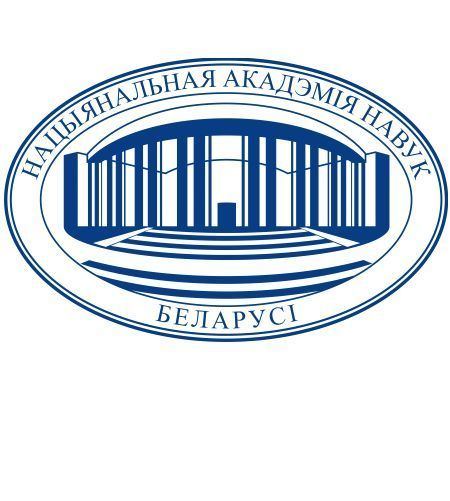The National Academy of Sciences of Belarus (NASB) (Belarusian: Нацыянальная акадэмія навук Беларусі, Russian: Национальная академия наук Беларуси, НАН Беларуси, НАНБ ) is the national academy of Belarus.
The National Academy of Sciences of Belarus (formerly Belarusian Academy of Sciences in 1928-1936; Academy of Sciences of the Byelorussian SSR in 1936-1991; Academy of Sciences of Belarus in 1991-1997) was founded on January 1, 1929 on the basis of The Institute of Belarusian Culture (Inbelkult, 1922—1928) which was reorganized to the Academy of Science through the Decree of Central Executive Committee and Soviet of People's Commissars of the Belarusian Soviet Socialist Republic on October 13, 1928. At the beginning of its activity the Academy had only 128 staff members, among them 87 scientists. By 1941 the Academy had 750 staff and 12 subdivisions.
During World War II the Academy was evacuated to Russia and other Soviet republics. Huge damage was brought to the Academy's material state.
Right after war's end, eight institutes started their activity again. By 1951 the Academy had 29 subdivisions, 1234 staff including 33 academicians. The Academy was supported by the governments of Belarus and the USSR as well as by leading scientific centres in Moscow, Leningrad and other Soviet cities.
Through its history the National Science Academy of Belarus has grown up to a respectful scientific center. A USSR-wide fame had Belarusian scientists like Panas Akhrem (chemistry), Mikalay Barysyevich (physics), Fyodar Fyodaraw (physics), Vyeniyamin Vacyakow (medicine, biology), Uladzimir Ulashchyk (medicine, biology).
After the dissolution of the Soviet Union the scope of the academic research and the structure of the academy had undergone significant changes, with more emphasis on applied problems, under the immediate supervision of Alexander Lukashenko in accordance with the Law №159-3 of May 5, 1998 "On the National Academy of Sciences of Belarus" and Decree of the President of Belarus №390 of August 4, 1998 "On Additional Measures on Realization by the National Academy of Sciences of Belarus of the Status of Higher State Scientific Organization".
The scientific-application centers (Научно-практические центры, Scientific and Practical Centers) were introduced by Lukashenko's decree in 2006. Their emphasis is the problems of vital interest for the economical development of the country. The first centers of this kind created in 2006 specialize in agriculture. Later in 2006 an e-commerce
Scientific and Practical Center for Arable FarmingScientific and Practical Center for Animal BreedingScientific and Practical Center for Potato, Vegetable and Fruit GrowingScientific and Practical Center for Agriculture MechanizationScientific and Practical Center for FoodstuffsInter-branch Scientific and Practical Center for Identification Systems and E-business OperationsResearch institutes and centers
Central Botanic GardenGrodno Zonal Institute of Plant GrowingInstitute of Applied PhysicsInstitute of Arable Farming and SelectionInstitute of Bioorganic ChemistryInstitute of Biophysics and Cell EngineeringInstitute of Chemistry of New MaterialsInstitute of EconomicsThe Center of Agricultural EconomicsInstitute of ElectronicsInstitute of Experimental BotanyInstitute of Experimental Veterinary MedicineInstitute of FlaxInstitute for Fish IndustryInstitute of ForestInstitute for Fruit GrowingInstitute of General and Inorganic ChemistryInstitute of Genetics and CytologyThe National Co-ordination Centre for BioSafetyInstitute of Geochemistry and GeophysicsInstitute of Heat and Mass TransferInstitute of HistoryInstitute for Land ReclamationInstitute of LinguisticsInstitute of LiteratureInstitute of MathematicsInstitute for Meat and Milk IndustryInstitute of Mechanics of Metal-Polymer SystemsInstitute of Metal TechnologyInstitute of MicrobiologyInstitute of Molecular and Atomic PhysicsInstitute of PhilosophyInstitute of Physical Organic ChemistryInstitute of PhysicsInstitute of PhysiologyInstitute of Plant ProtectionInstitute for Problems of Natural Resources Use and EcologyInstitute of RadiobiologyInstitute of SociologyInstitute for Soil Science and AgrochemistryInstitute of State and LawInstitute of Study of Arts, Ethnography and FolkloreInstitute of Technical AcousticsInstitute for Vegetable CropsInstitute of ZoologyJoint Institute of Machine BuildingJoint Institute of Power and Nuclear Research - "Sosny"Joint Institute of Solid State and Semiconductor PhysicsPhysical-Engineering InstituteScientific and Engineering Center "Plasmoteg"Polessian Agrarian-Ecological InstitutePowder Metallurgy InstituteRepublican Scientific and Engineering Center for Remote Sensing of Environment "Ecomir"Research Center of Resource-Saving ProblemsScientific-Engineering Enterprise "Geoinformation Systems"Scientific and Production Center "The Institute of Pharmacology and Biochemistry"United Institute of Informatics ProblemsUnitary enterprise MetallopolimerDevelopment and production of equipment for grading and recycling of polymer secondary materials.Development and production of equipment for application of polymer powder coatings.Production of equipment for recovery of building refuse.Manufacture of fibrous-porous materialsUnitary enterprise NuklonDevelopment and organization of manufacture of laser-optical and spectral devices for scientific research, medicine, ecologies, equipment for processing of milk, vegetable growing, hothouses, electric drives for wheelchairs, electro bicyclesR&D center CKBmachine building, instrument manufacturing, optical productionR&D center AxiconDesign and manufacturing of spectral devices for composition, structure and properties of matter control and for medical-biological measurements; optoelectronics devices for control of environmental parameters and technological processes; solid-state lasers and tunable dye lasers; meters of laser radiation wavelength; high-resolution laser spectrometers; glass and crystalline optical elements; unified mechanical assemblies for breadboard of schemes of optical, laser and spectral devices; printed-circuit boardsDesign Bureau "Academical" ("ОКБ Академическое")Experimental-design works of power plant engineering type on manufacturing the complex installation for scientific investigations and equipment for industrial use. Design and manufacturing of reservoir equipment; vessels, working under pressure; heat-exchange apparatus, hermetic machines and sealing units, rectification installation and other equipmentScientific Experimental Station on Sugar BeetAgricultural Experimental Station of Minsk, Mogilev and Vitebsk OblastsExperimental bases of the Institute of ForestYakub Kolas Central Scientific LibraryBelarusian Agricultural LibraryMuseum of History of the National Academy of Sciences of BelarusMuseum of Ancient Belarusian CultureMuseum of Boulders of the Institute of Geochemistry and Geophysics, a unique collection of glacial boulders of over 2,000 glacial stonesNANB Central Scientific ArchivePreviously known as Navuka i Tekhnika ("Science and Technology").

